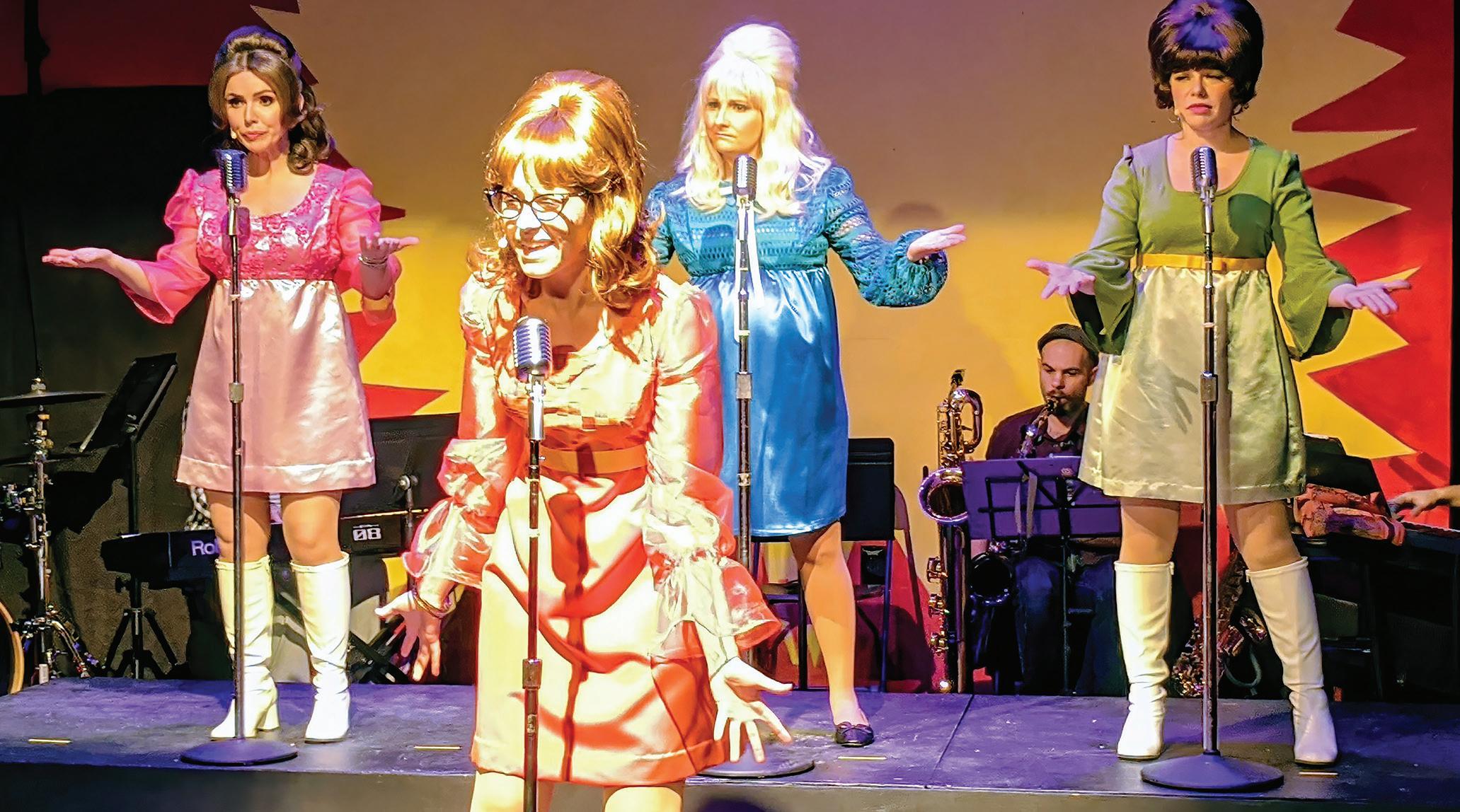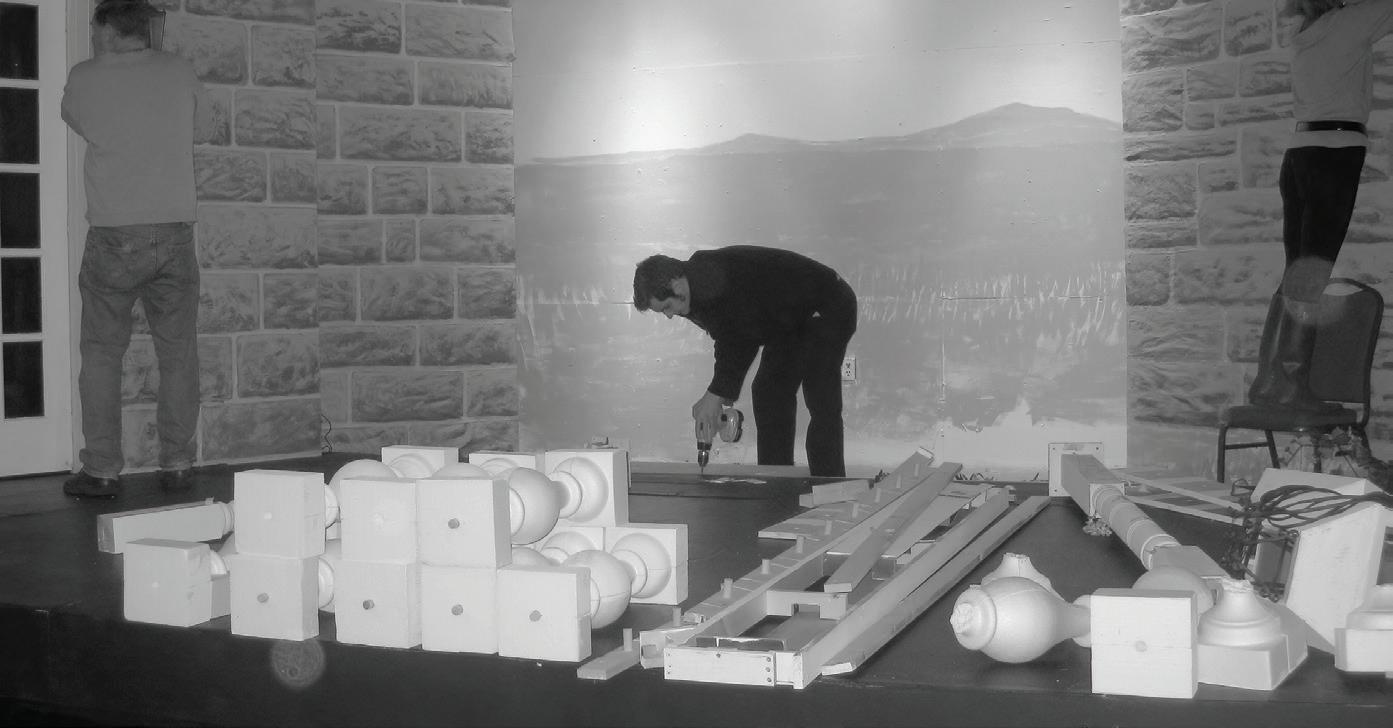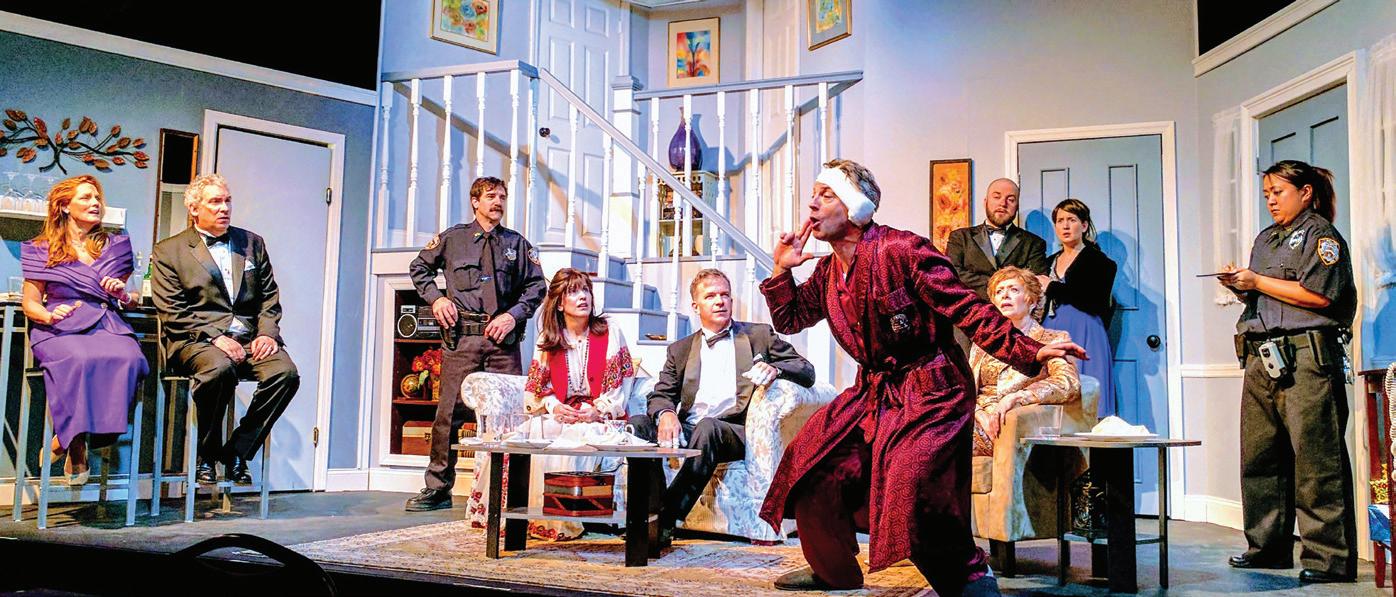
2 minute read
Art In The Spotlight
costume design also plays an enormous part in telling the play’s story accurately.
“A costume designer will sit in on rehearsals and talk to the director to get a cohesive feel for the play,” Henry says. “There’s a lot of research to find out what makes the character, including intricate details of their wardrobe that will reflect the character’s personality.”
She provides the example of constructing a garment for a firefighter who has been working in his field for 20 years — needing to craft work pants that tell his story and distressing the fabric on the knees and around the waist band.
Thinking of that character as a true person and getting as realistic as possible is the first thing any wardrobe designer must do. Where do all of these materials needed to make a production a visual success come from? Henry explains it truly is “a modge podge” based on the needs of the play or performance. It ends up being a combination of local fabric makers and fashion houses overseas that may have a certain type of beading or other raw good you’re looking for.
Henry says making things that are historically accurate is equally challenging as it is rewarding, which was the case during her work with Apple TV+’s show Dickinson, where she made Edwardian hoop skirts that reflected the vast social upheaval of the 19th century. “You need the garment to be structurally sound and historically accurate,” she says. “Paying attention to the actor’s skin tone is also very important when considering colors and hues you’re picking out.”
Whether there are racks of costume options or you’re making something from scratch, the goal remains the same — to present the clearest representation of the character so the actor can be completely transformed into his/her role.
When it comes to set design, Ridgefield Theater Barn’s Executive Director Pamme Jones describes the process as a “magical time in production,” explaining there is a whole heap of elements that go into the design process, including adhering to the play’s budget and scheduling for materials and staff to come in and actually build the set.
Stage sets can be static (staying the same throughout the entire show) or may need to change with every scene, which calls for an extra set of hands backstage that must work quickly. Sometimes, sets need to be multi-level and equipped with custom stairs.
From carpentry and scenic painting to projections and mechanicals, Jones explains the energy and excitement is always palpable. “On the days leading up to production, you will find carpenters, painters, props masters, costumers, and any number of other production and creative staff racing to have everything done and in place,” she says.


“There is nothing more exciting than that first technical rehearsal, with not-quitedry paint and a hundred other small details completed and coordinated for the first run of the show,” says Jones.
The next time you sit in one of our local theaters, take a moment to appreciate the behind-the-scenes and on-the-stage artistic talent that brings that performance to life. •
Artist Grants & Scholarships Applications
Artist Grants
ArtFul Visual Arts Initiative strives to change the status of “the starving artist” by providing and subsidizing resident artist opportunities to be used for studio space, material expenses, show applications, and marketing costs to allow an artist to create and show a body of work.
ArtFul will award up to *$15,000 annually for resident artist opportunities.
Scholarships
ArtFul supports both working and aspiring artists in exploring new avenues in their work and receiving additional training. ArtFul offers scholarships for qualified candidates applicable towards workshops, college level training, and masters level training at the institution that best fits the artist.
Scholarships range from *$2,500 to $10,000.










